All about the bean plant Golden rain

The garden bean is a very beautiful plant with an unusual appearance. An interesting culture comes from the legume family and got its name due to the structure of the fruits. However, it is not the bean berries that are valuable, but its bright and elegant flowering. In today's article, we will learn all about the beautiful bean plant called Golden Rain.
Description
The bean plant, which has been named Golden Rain, is a small and deciduous plant. It can also be bush-shaped. The bean leaves grow trifoliate. In the upper part, they are characterized by a smooth surface, and at the bottom they develop slightly velvety.
The height of an attractive and original plant varies. Under certain growing conditions, the Golden Rain bean can reach a height of 7 meters. The crown of the plant is characterized by a loose appearance and a funnel-shaped structure. A bean tree can consist of several trunks at once, due to which its crown can be similar to a broom. The trunks are typically gray-green or light brown.

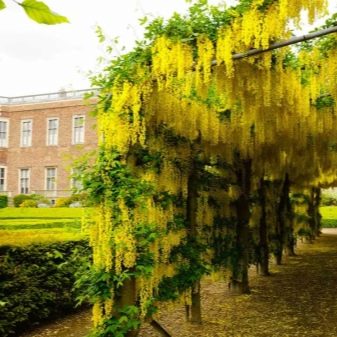
The original perennial in question blooms in spring, when there is no risk of frost return. Most often, this stage of development occurs in May. The colors of the inflorescences are very bright and juicy, kept in bright yellow tones. The inflorescences of the golden rain bean are composed of moth-type flowers. At times they can reach 50 cm. It is worth noting that this culture is capable of blooming for a whole month.
The elongated tassels of the Golden Rain bean are very similar in appearance to rain threads. It is due to this similarity that the plant received its memorable name. When a culture is in bloom, everything around it seems especially festive and festive.
Besides, The bean plant produces flowers that exude a very pleasant and light aroma. Thanks to these features, the plant is able to transform the entire garden, making it more romantic and aesthetic. At the end of the flowering stage, the legume forms special linear pods on which the fruits develop.
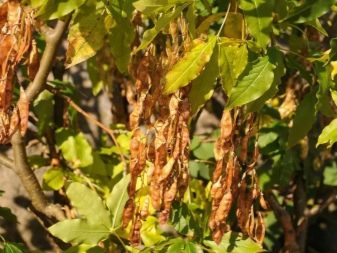

Despite the fact that the plant in question has a truly gorgeous look, it does not require complex care. Bobovnik is unpretentious. However, it must be borne in mind that sometimes its cultivation causes certain difficulties.
Golden shower is a wonderful honey plant. After its flowering, it is advisable to cut the flowers. Thanks to such manipulations, the decorativeness of the tree increases markedly. In addition, after pruning the crop, it blooms much more actively the following spring.
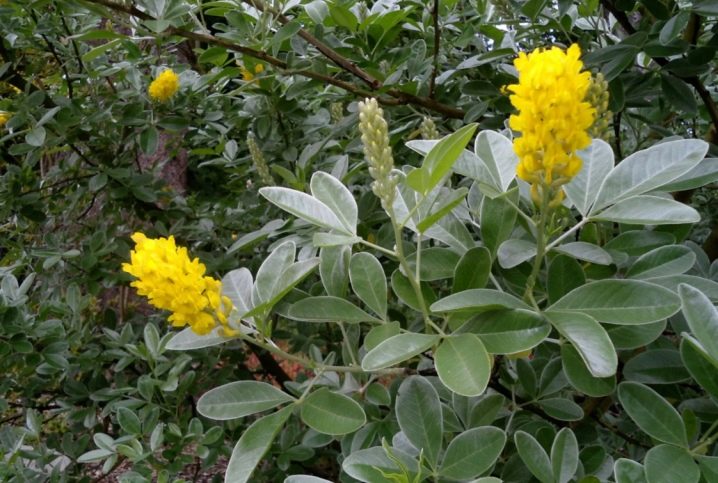
Types and varieties
Let's get acquainted with the main distinguishing features and characteristics of various types and varieties of bean berries.
Anagirolytic, or ordinary
The plant is native to the Mediterranean and Central Europe. This species is cultivated more often than others. Anagirolytic bean is an elongated bush with straight shoots. Also, the plant can grow in the form of a tree with a shortened trunk. The height of the latter is usually 5 to 6 meters.
The plant is characterized by pubescent leaves of a dark green color. Outwardly, they are very similar to clover, since they have a similar structure. The flowering culture occurs in May-June.The flowers of anagiroli bean are golden-yellow in color, odorless, gather in neat inflorescences, the length of which is 15-25 cm.
The most popular and original are the following common varieties:
- Aureum - in the spring season, the leaves of the plant are painted in a golden-yellow hue, which is then replaced by a greenish-yellow;
- "Pendulum" - ornamental and very beautiful plant with elongated and drooping shoots.
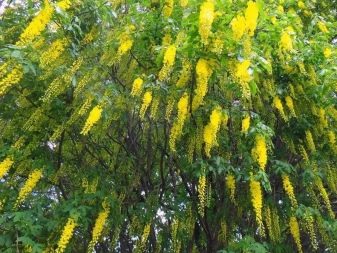
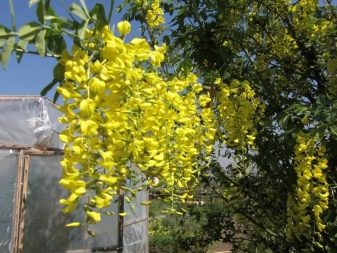
Alpine
This type of bean is characterized by falling, fragrant buds. Their length is usually from 30 to 40 cm. The leaf blades and stems of the culture are not pubescent. The culture blooms a couple of weeks later than the common bean tree discussed above.
This species also has its own interesting varieties:
- Pendula is an attractive trunk tree with decorative, long and sparse shoots that fall almost to the ground;
- Sunspire is an equally attractive dwarf variety that is very rare on the market.
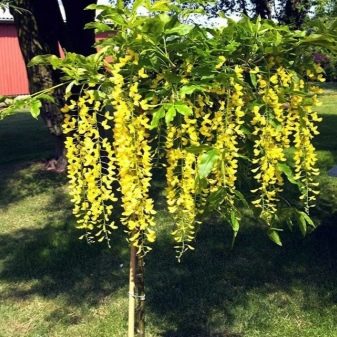
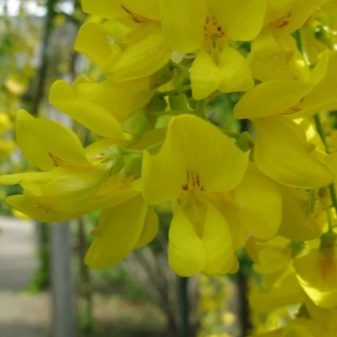
Vaterera
This bean is a special interspecific hybrid. The plant is characterized by the structure of a multi-stemmed species. The upper shoots here have a drooping shape. The tree can reach its largest size only after 20-50 years.
The culture produces very beautiful and fragrant flowers, collected in strong and elongated inflorescences. Their length is usually 40 cm. Thus, the popular variety Vossii is distinguished by the most elegant and spectacular inflorescences. The winter hardiness of this variety is weak - it is quite sensitive to severe frosts, therefore it cannot be left without shelter.
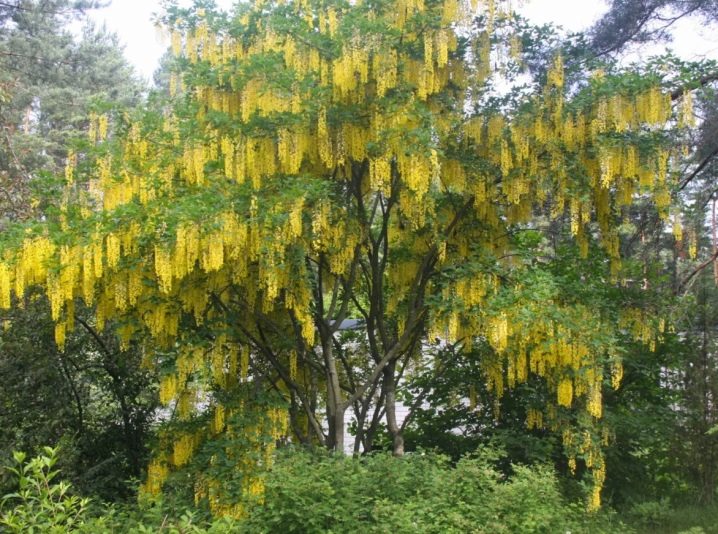
Seat selection
Before planting the original plant, it is necessary to choose the optimal place for it on the site. This issue should be taken as seriously and responsibly as possible.
Bobovnik Golden rain should be planted in sufficiently illuminated areas, where a comfortable warmth for the plant is always maintained. Landings should also be well protected from wind gusts. It is necessary to pay attention to the fact that in shading the culture shows a more meager flowering, and young plants with gusty winds and during winter can seriously suffer from the effects of frost.
The soil for the considered ornamental plant should be drained and moderately moist. The soil mixture should also have a normal nutrient level. It should be borne in mind that legume grows equally well in acidic and in rather poor soil.
The “square” for planting the Golden Rain bean should be looked for with special care, since then it will be impossible to transplant the plant. This is due to the fact that the bean plant is characterized by a massive rhizome system, which cannot be damaged during movement.
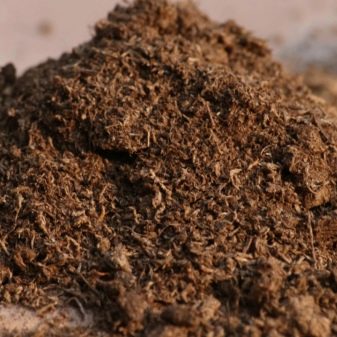
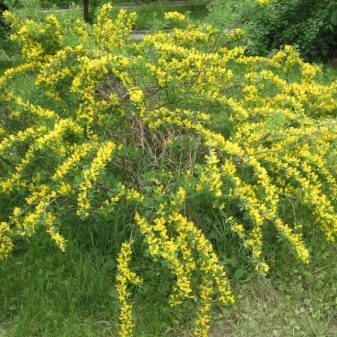
Landing
When the optimal place is chosen, you can start planting the Golden Rain bean directly. Let's consider in stages how to do it correctly.
- The hole for planting the plant must be made spacious enough so that the fertilizer can be placed in it, as well as the bean root rhizome can be placed without any problems.
- Organic food is placed in the hole. After that, they are thoroughly mixed together with the earth.
- Before planting, bean roots are kept in water for some time.
- Next, the support beam is fixed. The seedling is placed next to it.
- When the seedling is buried, it will need to be tied to a support piece.
In the spring season, planting should be done early. Experienced gardeners recommend planting legumes immediately after the snow melts.
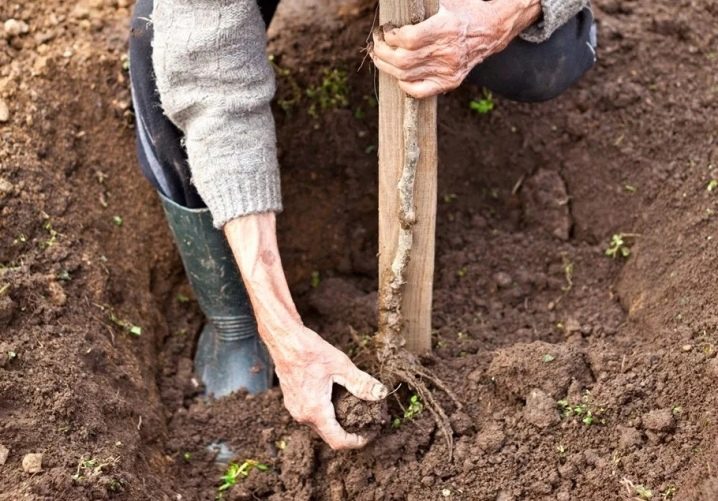
Care
Bobovnik Golden shower, like all other attractive plants, needs the right care procedures. Let's figure out the features of some of them.
Watering
The cultivation of bean plants requires mandatory and correct watering. The shrub can easily survive drought, however, young seedlings must be watered at least once a week. If the summer is dry, then watering should be more frequent. Ripe large plants are watered only if there has been no rain at all recently.
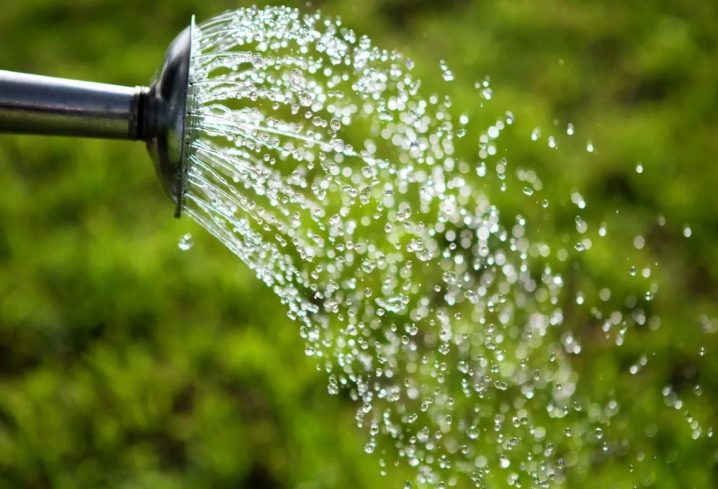
Pruning
Golden rain survives the pruning procedure without unnecessary problems. After such operations, the plant weakens a little, but then gradually returns to normal. If you need to remove all damaged or dried branches, this should be done only in the first days of the spring season.
If there is a need to shorten a living branch, then the cut must be closed with a special varnish for garden plantings. The latter will protect the culture from the penetration of various infections.
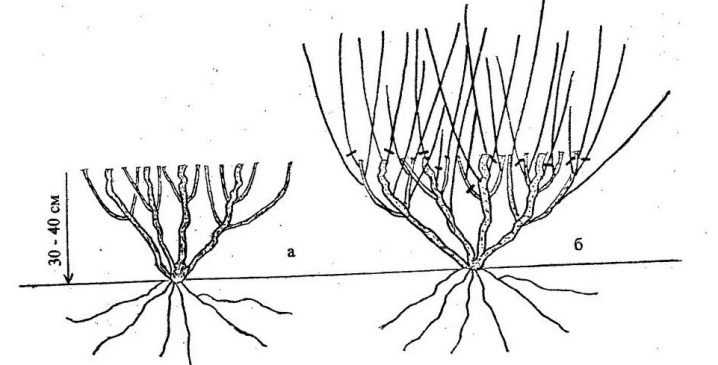
Preparing for winter
The gardener should remember that the Golden Rain bean tree needs good shelter during the winter season. This is especially important when it comes to the first 2-3 years of the life of a culture. Usually, for these activities, a covering material is used, laid in multi-layer. In the role of additional protection, you can also turn to dusting the rhizomes with compost.
Mature bean bushes, as a rule, do not need shelter for the winter, but during the winter months, accumulated snow must be thrown off from their branches. Thus, the branches will be protected from breakage under external loads.

Reproduction
Reproduction of a handsome bean can be carried out in various ways:
- cuttings;
- layering;
- seeds.
Bean cuttings are usually pruned in June. The optimum length of materials for further planting is 15-20 cm. The leaves in the lower half must be removed. Cutting the cuttings before moving into the peat-sand combination should be immersed in a special tool for more active root formation.
Having planted the cutting in the ground, it must be watered evenly, and the pot must be covered with translucent material. Rooting usually takes 5 to 6 weeks if the soil is always wet. A month later, after rooting is complete, the culture can be transplanted into open ground.
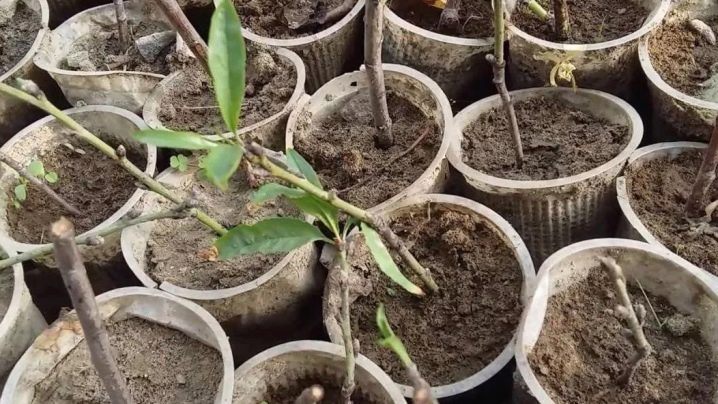
Many gardeners are turning to the propagation technique through layering elements. The method is very effective if only the bush releases side shoots. They need to be cut closer to the base. After that, the workpieces are placed in a trench prepared in advance, the depth parameter of which is 1-2 cm. In this case, the layers should be cut downwards. They are attached to the soil, and then sprinkled with fertile soil mixture. With the coming of the next year, if the layers show growth, they are separated and transplanted to another place.
Also, the gardener can propagate the plant through the seed method. In accordance with it, it is necessary to act like this.
- Seeds are sown in garden estates in the fall. Throughout the winter season, the seeds will be able to complete the natural stratification procedure. Before sowing, it is advisable to place the material in heated water for a certain time so that the compacted shell softens.
- Seedlings can be mixed with sand and then placed on the shelf in the refrigerator. Here the material can remain in storage at temperatures from 0 to 1 degrees Celsius until the spring season. With the arrival of warm temperatures, stratified seeds are sown into the ground.
As soon as the seedlings, formed from the seeds, have time to grow a little and become stronger, they can be transplanted to another main place. Bushes must be taken in combination with a lump of earth.
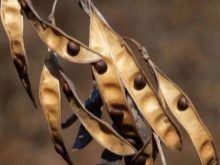
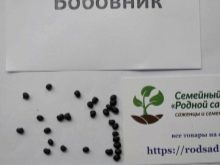

Bobovnik in landscape design
A spectacular culture with golden tassels of flowers looks gorgeous both in the form of a single planting, and in group plantings. If the plantings are too thick, then the stems can stretch strongly upward, while exposing themselves in the lower half. In such conditions, the shrub blooms much more poorly.If the stems nevertheless become bare over time, beautiful annuals or perennials can be planted next to them.
Golden rain looks especially impressive and attractive, being located against the background of dark coniferous plantings, as well as bright green lush greenery of a decorative type. The culture looks beautiful, growing next to wisteria, jasmine, hawthorn.

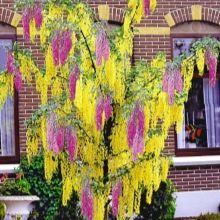
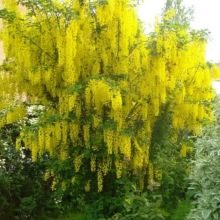



































































The comment was sent successfully.